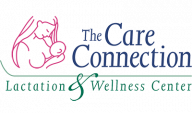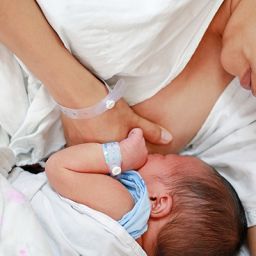![Breast Pumps Symphony Plus]() If you are a mother or a soon-to-be mother, you probably have questions about breast pumps. You may be asking what exactly you should know about them.
If you are a mother or a soon-to-be mother, you probably have questions about breast pumps. You may be asking what exactly you should know about them.
Breast pumps have been around for centuries. As early as the 1500s medical literature suggests that women used to be instructed to use a “sucking glass” when their baby could not remove milk at the breast (Riordan &Wambach, 2010). The vacuum on this glass was generated by the mother’s own mouth to help relieve engorgement or evert her nipples. Women could also use a glass, or a glass bottle heated with very hot water. When placed onto the breast this would draw milk out. Since that time, there have been many designs to ease milk expression for women; from the long-handled lever pump from the 1830s to the modern-day pocket-sized breast pumps.
A breast pump is aimed to mimic your baby at the breast to remove milk to be fed to the baby via bottle, syringe, spoon, cup, or feeding tube. A baby who breastfeeds well can remove milk more efficiently than a pump. This is linked to differences in hormonal releases initiated by the baby being at the breast compared to a mechanical device. A mother may wish to use a pump for many different reasons such as separation from her baby, to increase her breast milk production, to protect her milk production should the baby have feeding difficulty or mothers who choose to exclusively pump.
There are many different breast pump options available today for women that need to express milk aside from their infant’s nursing. The different kinds of pumps include manual, battery-operated, and double electric.
A relatively new option is the Haakaa pump. This device uses gentle suction to remove milk from the breast while mom uses hand expression or feeds the baby on the opposite breast. It does not need to be plugged in or charged.
Each woman has a different situation and need for a breast pump. Some women prefer a hand pump for occasional use when leaving their baby for a night out. Other women need a double electric breast pump better suited for pumping when they return to work.
The most common interests when choosing a breast pump are how quickly it removes milk, comfort, and how much milk it removes. The answers to these questions are very much on a person to person basis. Many factors affect how much milk a pump can remove. In fact, hand expression is often most effective immediately after birth and can often be the most simple method.
Recommendations to have the most successful pumping session:
- Always read the instructions on your pump first. This includes whether the pump parts need to be sterilized before the first use. Note: The tubing on your pump should never be cleaned or sterilized as only air encounters it.
- Wash your hands well before starting to pump. Just as with handling any sort of food, unclean hands can introduce bacteria. You want to avoid contaminating your breastmilk, pump parts, or storage containers.
- When using a double electric breast pump, aim for about 15-20 minutes total when pumping both breasts at the same time. Double pumping is generally best as it raises your prolactin level higher, yielding more breastmilk. Pumping for more than 20 minutes may increase the risk for nipple or breast tissue damage due to prolonged suction. Pumping times vary depending on the mother’s situation.
- Breast massage while pumping will help to remove more milk. You have milk ducts throughout your breasts so massage everywhere including the sides and underneath your breast. For more information, view this video on “hands-on pumping”
- Start off on the lowest suction setting. Slowly increase as tolerated but decrease if any discomfort is felt. A higher suction volume does not mean more milk removal and may collapse milk ducts during pumping.
- Activate your senses to boost hormone levels that help with pumping. If you are away from your baby, bring a onesie of his/hers to smell while pumping. Also, look at pictures, videos, or sounds of your baby crying.
- A warm moist compress applied to the breasts for about 5-10 minutes before pumping and throughout the pumping session will help with milk removal.
- A pump flange is a cone that your breast sits in. These come in different sizes and each woman and possibly each breast is different. If your nipple is rubbing inside the flange, if you have any pain or pinching while pumping, or if you feel your pump is not effectively removing your milk, come visit the Care Connection so we can measure you for a proper fit.
Remember that there are several different variables that can affect pumping output. These can include maternal stress, age of baby, time of day, and how frequently/efficiently baby nursed within the past 24 hours.
You may have been offered a used breast pump from a friend or relative. Most pumps are designed for single users. Use caution when using a pre-owned breast pump. Be sure to get the medical history of someone you may be sharing the pump with as there is a possibility of cross-contamination. It is recommended to purchase new plastics and tubing or replace tubing that has sat unused for the time between your own babies.
Many insurance companies are covering a portion of or the full cost of a breast pump. Each insurance plan is different in its benefits. Call or visit The Care Connection so we can check your insurance coverage and find the breast pump that best suits your needs!
Be sure to check out our most popular online class: Breastfeeding Beyond the Newborn Period (Part 2) to learn more about How and when to use your breast pump, sorting expressed breastmilk, and all sorts of other useful information!
References:
Riordan, J., &Wambach, K. (2010). Breastfeeding and human lactation. London: Jones and Bartlett.


 If you are a mother or a soon-to-be mother, you probably have questions about breast pumps. You may be asking what exactly you should know about them.
If you are a mother or a soon-to-be mother, you probably have questions about breast pumps. You may be asking what exactly you should know about them.





